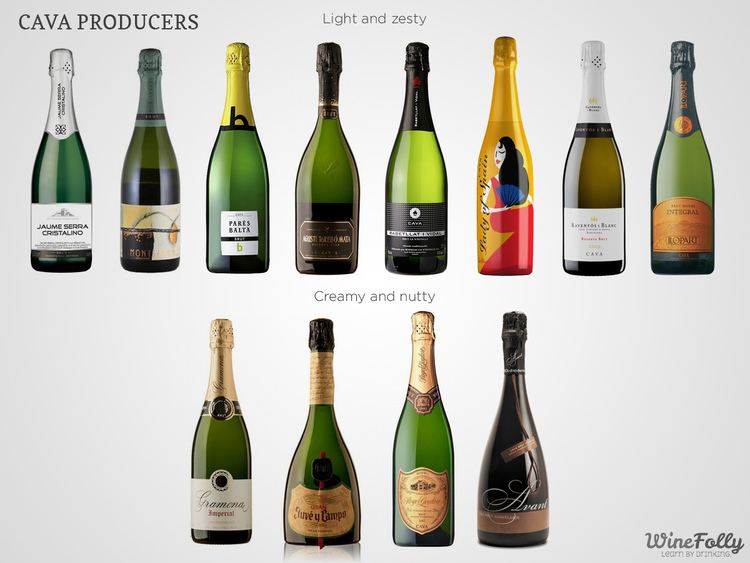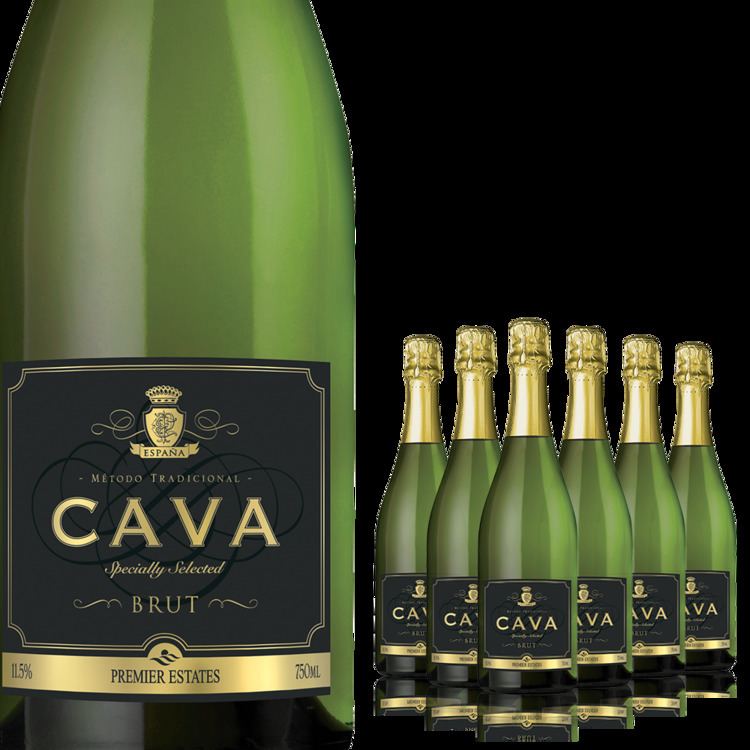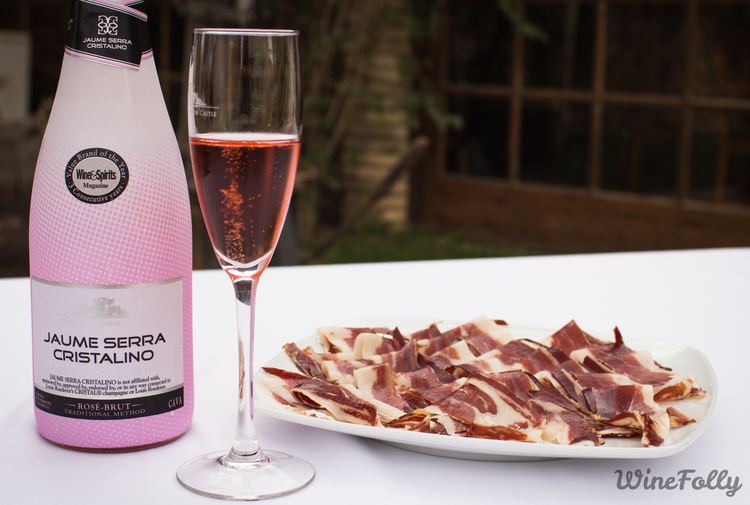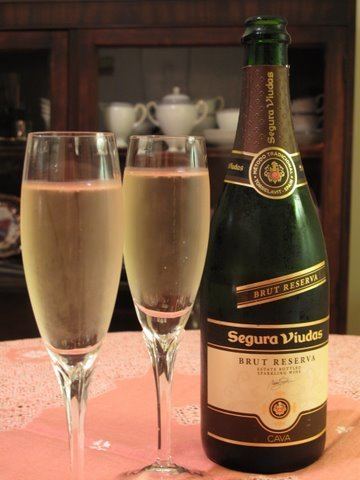Cava ([ˈkaβə], plural caves) is a sparkling wine of Denominación de Origen (DO) status from Spain, most of which is produced in Catalonia. It may be white (blanc) or rosé (rosat). The macabeu, parellada and xarel·lo are the most popular and traditional grape varieties for producing cava. Only wines produced in the champenoise traditional method may be labelled "cava"; those produced by other processes may only be called "sparkling wines" (vinos espumosos). About 95% of all cava is produced in the Penedès area in Catalonia, with the village of Sant Sadurní d'Anoia being home to many of Spain's largest production houses. The two major producers are Codorníu and Freixenet. Cava is also produced in other villages in Aragon, Castile and León, Extremadura, La Rioja, Basque Country, Navarre and Valencia.
Contents

In the past, cava was referred to as "Spanish champagne", which is no longer permitted under European Union law, since Champagne has Protected Geographical Status (PGS) and Spain entered the EU in 1986. Colloquially it is still called champán or champaña in Spanish or xampany in Catalan. Today it is defined by law as a "quality sparkling wine produced in a designated region" (Vino Espumoso de Calidad Producido en una Región Determinada, VECPRD).

Cava is an important part of Catalan and Spanish family tradition and is often consumed at celebrations like baptisms, marriages, banquets, dinners and parties.

Name

The Catalan word cava (masculine, plural caves) means "cave" or "cellar". Caves were used in the early days of cava production for the preservation or aging of wine. Catalan winemakers officially adopted the term in 1970 to distinguish their product from French champagne.
History

Catalonian sparkling wine was first made as early as 1851, although the roots of the cava industry can be traced back to Josep Raventós's travels through Europe in the 1860s, where he was promoting the still wines of the Codorníu Winery. His visits to Champagne sparked an interest in the potential of a Spanish wine made using the same traditional method. He created his first sparkler in 1872, after the vineyards of Penedès were devastated by the phylloxera plague, and the predominantly red vines were being replaced by large numbers of vines producing white grapes.

Catalan cava producers pioneered a significant technological development in sparkling wine production with the invention of the gyropallet, a large mechanized device that replaced hand riddling, in which the lees are consolidated in the neck of the bottle prior to disgorgement and corking.
Production
According to Spanish law, cava may be produced in Catalonia. The Penedès is located in Catalonia. Cava is also produced in other villages in Aragon, Castile and León, Extremadura, La Rioja, Basque Country, Navarre and Valencia.
To make rosé cava, small quantities of still red wines from Cabernet Sauvignon, Garnacha or Monastrell are added to the wine. Besides Macabeu, Parellada, and Xarello, Cava may also contain Chardonnay, Pinot noir and Subirat grapes. The first cava to use chardonnay was produced in 1981. Like Champagne, cava is produced in varying levels of sweetness, ranging from the dryest, brut nature, through brut, brut reserve, sec (seco), semisec (semiseco), to dolç (dulce), the sweetest.
